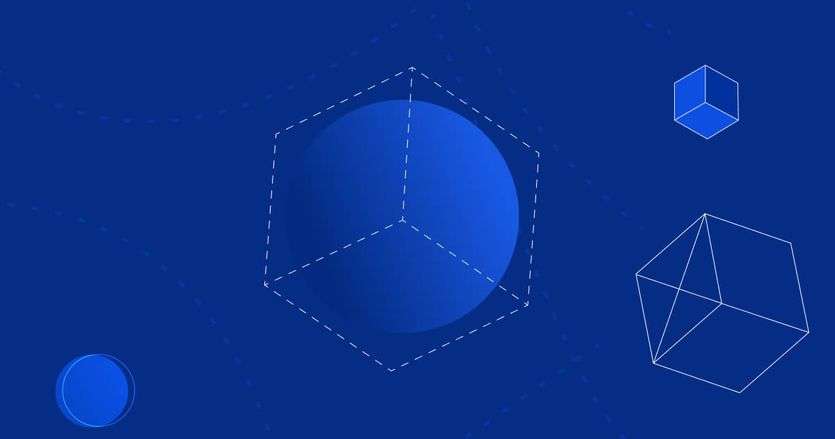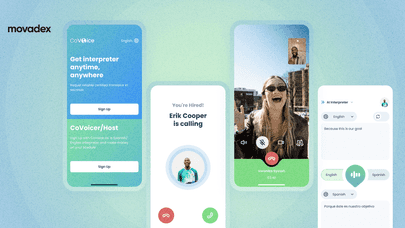Phew, we hope you had great holidays and are ready to get back to work. We sure are! Without further ado, let’s get to today’s topic. We all have wild ideas. And let’s face it: sometimes they work, and sometimes they don’t. If it’s just a bizarre recipe you came up with, you won’t lose too much if it doesn’t work. But something bigger, like a startup? It better be good! So today, we will talk about the process of product prototyping — something that will come in handy for your future ideas.
Proof of Concept
 First, let’s draw a line between a prototype and a proof of concept, because some folks mix them up. Proof of concept (PoC) can be something small — like a sketch, or a quick note in your phone. And there will most definitely be more. It is something that you use to test your idea with. A question that should be asked here is:
First, let’s draw a line between a prototype and a proof of concept, because some folks mix them up. Proof of concept (PoC) can be something small — like a sketch, or a quick note in your phone. And there will most definitely be more. It is something that you use to test your idea with. A question that should be asked here is:
Can it be developed? A prototype is a completely different story. It is more visual, and takes more time. Unlike PoC, a prototype includes some general ideas of layout, design, navigation etc. Here, the question sound like this: How will it be developed? So it is a matter of can & how. We always welcome people with ideas here at Movadex. Clients often come to us with the vision, and we are happy to turn it into a reality! One of such projects is Pyoor.
About Pyoor: Pyoor is an environmentally-friendly platform that revolutionizes services to decrease eco - footprint on the planet. The brand mission is to support and promote the idea of conscious choices with benefits to both the self and the planet. The brand vision is to change the world by making small changes in daily choices. Pyoor should trigger the idea of a clean, pure, clear image of the world. The naming directly contradicts with what the brand is fighting against — pollution. This slight resemblance of alliteration only highlights the pyoor (pure) vs pollution metaphor. The idea of green and eco-friendly movement is supported by the vision of pure. The idea is clear. It’s time to go on!
Minimum Viable Product
 Minimum Viable Product (MVP) essentially is a very rough version of your product. It is used for idea validation and early testing — it helps you to see whether your product attracts people & hear what they have to say about it. MVP is also good at estimating costs. In a nutshell, it is a research thing. Now, let’s talk about questions for this stage. When developing a MVP, the good start would be to ask yourself these:
Minimum Viable Product (MVP) essentially is a very rough version of your product. It is used for idea validation and early testing — it helps you to see whether your product attracts people & hear what they have to say about it. MVP is also good at estimating costs. In a nutshell, it is a research thing. Now, let’s talk about questions for this stage. When developing a MVP, the good start would be to ask yourself these:
What are my goals? > What resources do I have? > Will my product do something in a different way, so that it will attract customers more than its competitors? It is a good idea to always create user flows. We always do it before starting the design. Here is Pyoor’s User Flow Map:
Pyoor was initially released as MVP, and to this day, and we are working closely with our client to make our product better and better! Mind that even if your application must be actually viable. It means that the user must be able to do the thing. Even if it is only one thing, it should do it well. For instance, Pyoor’s thing was a platform. Companies could sign up on the platform and provide their services, giving Pyoor some interest from every deal they make.
Alpha
 Alpha release contains a feature or a set of features that are incomplete. It is most likely unstable, but it’s a start! An Alpha is more refined, and your product is taking more shape. It is best to gather as much feedback as it is possible now to take the right route and avoid some regrets later. Take 10, or maybe 20 people, give them your product, and ask them to tell everything that is on their mind. Some questions you can ask them to answer:
Alpha release contains a feature or a set of features that are incomplete. It is most likely unstable, but it’s a start! An Alpha is more refined, and your product is taking more shape. It is best to gather as much feedback as it is possible now to take the right route and avoid some regrets later. Take 10, or maybe 20 people, give them your product, and ask them to tell everything that is on their mind. Some questions you can ask them to answer:
Does the product solve my problem and does it well? > Is it comfortable to use? Currently, we do not have any apps in Alpha, but don’t worry, some are on the way to it!
Beta
 Beta release, unlike Alpha, has all the features complete, but the release itself is not fully tested and most likely contains some bugs. Even though the product is ready, it is still not ready for public use. If you want the public to test it, you can give them a warning, that this is beta, people, something can go wrong.
On this stage, like on any other, feedback is something to look for. You can ask more people to test your product, and refine it further. The questions for this stage are:
Beta release, unlike Alpha, has all the features complete, but the release itself is not fully tested and most likely contains some bugs. Even though the product is ready, it is still not ready for public use. If you want the public to test it, you can give them a warning, that this is beta, people, something can go wrong.
On this stage, like on any other, feedback is something to look for. You can ask more people to test your product, and refine it further. The questions for this stage are:
Is the product ready for launch? > What can be better about it? Astrolife is one of our Beta releases.
About Astrolife: Astro Life is a horoscope app that provides comprehensive and precise astrology readings and information about the moon. You can use it to learn more about yourself and significant people in your life. It will help you build deeper and more meaningful connections and relationships with your loved ones. You will get recommendations based on the lunar cycle, biorhythms, and your Zodiac horoscope to help you fully enjoy your journey through life. Even though all the features work, the app is not yet ready for a public release. You can download it on Google Play, but it will tell you that it is a beta release and you may encounter some bugs.
Launch-Ready Product
 By this time, most of the bugs must have been resolved, and your product must solve a user’s problem. But it doesn’t mean that you should stop the process of gathering feedback and making your app even better. And the final question to ask yourself is… How can I make it better?
UPrice is one of our launch-ready (in fact, it already launched) products.
By this time, most of the bugs must have been resolved, and your product must solve a user’s problem. But it doesn’t mean that you should stop the process of gathering feedback and making your app even better. And the final question to ask yourself is… How can I make it better?
UPrice is one of our launch-ready (in fact, it already launched) products.
 A few words about it:
A few words about it:
Uprice is a currency converter that uses computer vision technology to detect prices and provide you better finance management experience. As always, thanks for staying with us and reading through the post! We hope that it was helpful for you. Remember, you are breathtaking. With love, Movadex team




